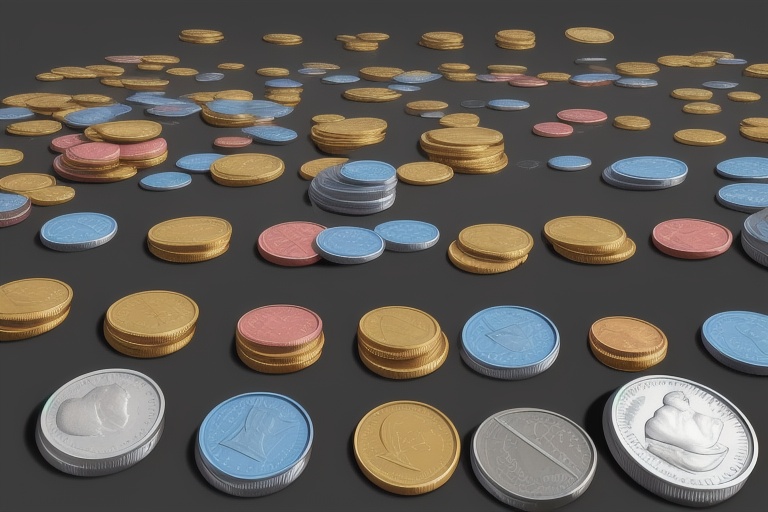Coin collecting, known as numismatics, is a fascinating hobby that captures the attention of individuals from various walks of life. It marries the thrill of the hunt for rare pieces with the appreciation of the storied pasts these small metallic artifacts carry. As someone deeply ingrained in this world for three decades, I understand the nuances that go into determining a coin's value and the excitement that comes with discovering a piece that holds historical and monetary significance.
Coin collecting, known as numismatics, is a fascinating hobby that captures the attention of individuals from various walks of life. It marries the thrill of the hunt for rare pieces with the appreciation of the storied pasts these small metallic artifacts carry. As someone deeply ingrained in this world for three decades, I understand the nuances that go into determining a coin's value and the excitement that comes with discovering a piece that holds historical and monetary significance.
Understanding Coin Value
What makes one coin worth more than another? The value of a coin hinges on multiple factors, and it’s crucial for collectors to understand these in order to build meaningful—and potentially valuable—collections.
Rarity and Demand
One of the fundamental principles of economics – supply and demand – plays a significant role in the valuation of coins. A coin that is scarce, and for which there is substantial collector demand, tends to be more valuable. It's a dance between how many of these coins exist and how many collectors are seeking them.
Condition and Grade
The condition of a coin, often referred to as its grade, is also integral to its value. Coins are graded on a scale, with those in mint or near-mint condition fetching higher prices. Grading can be subjective, which is why reputable grading services—like the Professional Coin Grading Service (PCGS) and Numismatic Guaranty Corporation (NGC)—are often called upon for their expert evaluation.
Historical Significance
Coins that serve as relics of important historical periods or events can garner high interest among collectors. For instance, coins minted during a rare moment in history or those that mark a significant occasion are often sought after. The narrative behind a coin often adds an intangible value that goes beyond its mere material worth.
Precious Metal Content
The intrinsic value of the precious metals—gold, silver, and platinum—that make up a coin can greatly affect its value. As market prices for these metals fluctuate, so too can the value of coins composed of them. Collectors and investors often watch metal markets closely as part of their valuation assessments.
Provenance
A coin with a well-documented history, or provenance, can see its value rise. If a coin was part of a noteworthy collection or once held by a renowned figure, that history can add to its desirability and, therefore, its value.
Identifying and Analyzing Trends
To be successful in the world of coin collecting, one must be attuned to the ebb and flow of market trends. These trends can influence the value of coins and help collectors make savvy choices.
Technological Advances
Technology has revolutionized the way collectors and dealers interact with the hobby. Online marketplaces, auction platforms, and discussion forums have made it easier to buy and sell coins, as well as share information and research. High-resolution imagery and advanced authentication techniques have increased confidence in remote transactions.
Global Market Influence
The coin market is no longer confined to local collectors and shops. It's a global marketplace where a collector in one part of the world can easily purchase coins from another. This ease of accessibility can affect the supply and demand for specific coins, influencing values.
Emerging Collecting Themes
Collectors' interests can shape trends in the market. For example, there might be growing interest in coins from a certain historical period or featuring specific designs or motifs. Recognizing these emerging themes can help collectors anticipate which coins may increase in value.
Economic Factors
The broader economy can also impact coin values. In times of economic uncertainty, more investors turn to tangible assets like precious metals and rare coins, which can drive up prices. Conversely, when the economy is strong, the market for collectibles might soften as people invest more in traditional financial products.
Navigating the Numismatic Landscape
Coin collecting is not just about the pursuit of valuable coins; it's also about the joy of discovery and the rich tapestry of stories that these coins embody. The key to successful collecting is knowledge. By staying current with market trends, historical contexts, and valuation criteria, collectors can curate collections that bring personal satisfaction as well as potential financial returns.
Conclusion
As the numismatic landscape continues to evolve, driven by technological advancements, global market influences, and collectors' shifting tastes, those who stay well-informed will find coin collecting a deeply rewarding and potentially lucrative hobby. Remember, the value of a coin goes beyond its price tag; it's a piece of history, a work of art, and a treasure that connects us to the grand narrative of human civilization. Whether you're a veteran numismatist or a newcomer to the scene, the world of coins welcomes you to explore, learn, and, most importantly, enjoy the journey.
Information for this article was gathered from the following source.




